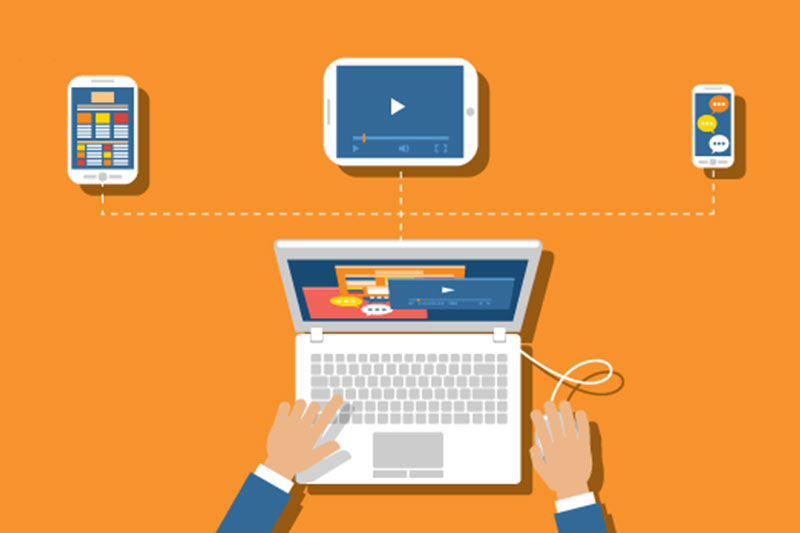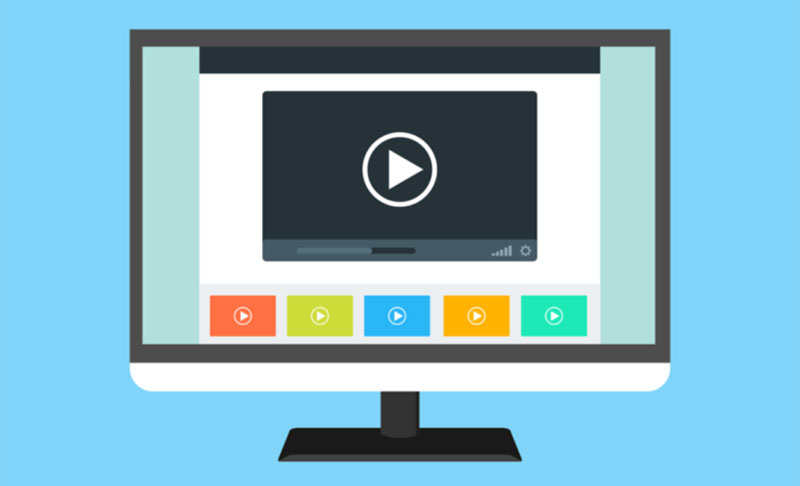Video lessons: how to use videos in your online course
If you are preparing an online course, it is likely that you have included or, at least considered the idea, of including video lessons in your material.
In today’s world, where more than 300 hours of video are uploaded to YouTube every minute, this is certainly a good idea.

Tips for using video lessons in online courses
With the advancement and popularization of technology, the barriers to creating videos are falling.
Almost all modern computers come with built-in webcams and microphones, and software options for capturing and editing images and audio are multiplying.
But despite the relative ease of producing videos without leaving your home, creating effective videos still requires careful planning and elaboration, with attention to various details, such as scenery and lighting.
– Learn how to record videos at home
It is also necessary to consider that not all videos are created in the same way, especially with regard to their pedagogical effectiveness, a necessity in the case of video lessons.
To achieve this goal and deliver the best result to your students, see five great reasons and ways to use videos in your online course.
1. To create a sense of presence
When compared to classroom education, taking an online course can be a lonely experience.
To minimize this effect, video lessons help bring life to the course, showing the image of a teacher with which students can connect and relate.
If you’re not familiar with video production, start by creating smaller videos as supporting material.
– How to create videos for online courses
Train until you feel secure enough to record longer videos, with all the content that you would pass in a classroom, for example.
Here are some ideas of what you can do:
- Include a short presentation video, in which you talk a little about yourself, your training and professional experience.
- Provide individual feedback on video, commenting on the student’s performance on the course.
- Create a video for the start of each new module, covering the goals of the module and what students can expect.
- At the end of each module, publish a video commenting on what the student must have learned and how it relates to the next stage of the course.
- Submit a video response commenting on the general results of a test or activity, discussing common mistakes and providing guidance.
2. Provide a unique perspective
For hundreds of years, the written word has been the primary means of sharing information in more depth.
Even if they are just words on a paper, the personality and knowledge of each author is transmitted through reading.
In the same way, the video emerged as a new way for a person to convey his/her unique perspective, which can be seen by the appearance of the so-called Youtubers, who constitute real fortunes by making videos in which they pass on their personal opinions on different subjects.
The increasing demand for this type of content shows how a single perspective is easily communicated by video, making this resource a practical way to attract and win over the viewer.
In fact, every instructor brings something unique to each class they teach, having a much better chance of communicating it through video lessons.
Let the camera capture not just your words, but your ideas, personality and passion for what you do.
– Tips for speaking well on video
This gives students a greater perception that you are the instructor and that the course is not just a list of materials to be consumed and assessments to be completed.
This unique approach to the course material presents you as an attentive specialist in your field. However, this does not mean that you cannot use other people’s video lessons to enrich your online course.
Sometimes, third-party videos can more clearly and deeply communicate concepts that you try to teach, such as TED lectures, clips from scientific programs, etc.
Ideas on how to use the video to provide a unique perspective:
- Synthesize or contrast the arguments of various authors based on your own research.
- Tell a personal story that involves the lessons in question.
- Launch your point of view on a concept and invite the class to a debate, where each one should write his / her opinion.
- Include a link to a convincing TED Talk.
3. Demonstrate a process
In the absence of the proximity that a classroom provides, recording videos is the best way to demonstrate steps in a process.
Video lessons serve to make complex processes more readable for many students, as they allow step-by-step monitoring of problem solving.
It is important to note that videos involving demonstrations raise significant accessibility concerns.
Consider a student with a visual disability who encounters a software walkthrough.
If you are just moving your mouse and clicking buttons, that student will not necessarily be able to understand what is going on.
– Meet the best free screen recorders
So when doing demonstrations on the camera, remember to dictate all the steps of what you do. It may seem tiring, but your video will be more accessible.
Ideas on how to use video to demonstrate processes:
- Move the camera closer to what you are doing and perform the task slowly, showing and explaining how to do each process.
- Use the screen capture software to record a detailed tutorial.
– Record tutorial videos: tips to get the best result
4. Increase engagement
Every teacher tries to engage his students, so that they enjoy their classes and sign up for more.
Engagement means interaction: interaction between students, students and course content and students and teacher.
It is logical that a video containing dialogue can help bring some ideas to life in a more engaging way than simply reading a text.
In addition, as mentioned above, students benefit from hearing what experts think.
Are there colleagues, professionals, researchers or authors in your field who would be willing to discuss a topic in front of the camera?
Perhaps you can organize a debate. The more voices you can bring to your video lessons, the more value it will bring to your students.
Ideas on how to use video to present intellectual exchanges and facilitate interaction:
- Record a video call with colleagues who have (and defend) their perspectives on the issues covered in the course.
- Contact the author of any publication you asked students to read and ask if you can record an interview.
- Promote a webinar or other type of live presentation, in which more people can participate and discuss a specific issue.
– Webinar: advantages for your online course
5. Create connections with the real world
When it comes to teaching, one of the advantages of including visual aids is that it can make knowledge more “sticky” in students’ brains.
Even non-visual students can benefit when images (static or moving) accompany explanations or definitions to make them clearer.
In addition, research on motivation suggests that illustrations, graphics and other images related to the course content increase the sense of relevance of the material.
Students want to know that what they are studying has just that, relevance. So if you are thinking of taking video lessons, consider whether there are places you can visit with a camera to help bring what is being said and taught to life.
Ideas on how to use video to provide connections to the real world:
- For each principle taught in a class, film a demonstration of the practical application of that principle.
- Film a scene that relates to what will be taught, as an introduction to the material.
- Can’t you do a demonstration on your own? Share a third-party video where something related happens and start your explanation from what was seen.
– Basic Video Editing Techniques
How to make your video lessons available online

You can use videos in a variety of ways in online courses and they can play a valuable role in helping your students achieve their learning goals.
Video classes also serve to fulfill important secondary goals, such as increasing motivation, creating a community and establishing a presence.
Even if you are not an expert in video production, the wide availability of technology allows you to easily immerse yourself in the creation of this material.
If it is your presentation on camera that concerns you, keep in mind that viewers prefer more personal videos than those with a highly rehearsed presentation and advertising aspect.
Be authentic, train and do your best. If you like what you do, it will be easily captured by the camera and the viewer, increasing their interest in what is being presented.
Video recorded, ask some friends for feedback, make the necessary improvements and when everything is perfect, upload it to video platforms or direct to your online school on Coursify.me.
– How to Choose the Right Video Hosting Platform
Learning Management System (LMS), Coursify.me has all the necessary features for you to integrate and import content from video hosting platforms such as Vimeo and YouTube.
– Whats is a Learning Management System
Instructors can embed their hosted videos lessons in any of these channels on their page on Coursify.me.
To know more, visit our website, make a test and take advantage of all the features of our platform to create quality online courses.

